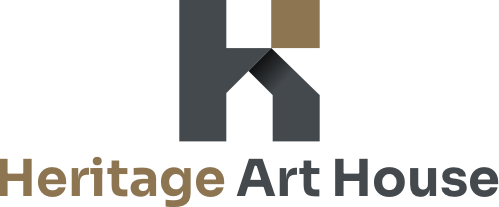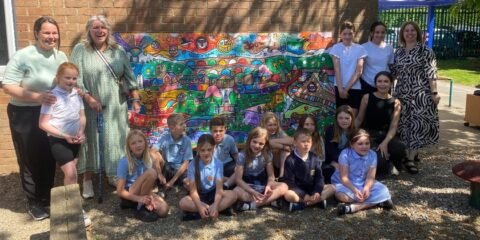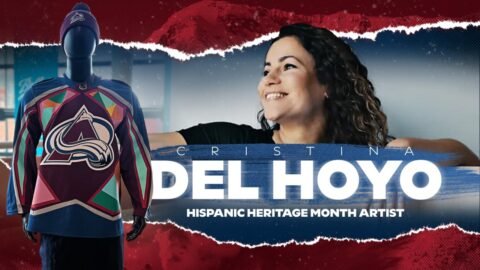Once again, the Yemisi Shyllon Museum of Art (YSMA), Pan-Atlantic University, Lagos, has gladly received a donation of an enthralling art work in its rich and growing collection.
Titled “Legacy of Water”, a two-panel mixed media painting, was created over 13 months by Buki Mariam Animashaun, a great-granddaughter of great-great-grandfather Candido Da-Rocha, who was among the descendants of formerly enslaved Africans who resettled along the West African coast in the 19th century.
In this interview, Jess Castellote, museum director, YSMA, reflects on the work, the artist’s creativity and kind gesture, and plans to explore themes of the work with PAU students, among others.
OBINNA EMELIKE brings the excerpt.
What are your thoughts about Buki Mariam’s work?
Legacy of Water is a two-panel mixed media painting that traces the turbulent, forced migrations and complex returns of Afro-Brazilian ancestors through the symbolism of water. Drawing from her own maternal lineage, this piece is rooted in the story of Buki’s great-great-grandfather, Candido Da-Rocha, whose legacy reflects both inspiring innovation and inherited silences.
Born in Bahia, Brazil, and later returned to Lagos, Candido Da-Rocha was among the descendants of formerly enslaved Africans who resettled along the West African coast in the 19th century. These returnees, often referred to as the Aguda, carried with them hybrid identities shaped by transatlantic journeys, Catholic faith, and Brazilian cultural influences, leaving lasting imprints on architecture, language, cuisine, and music in Lagos.
Created over 13 months, the work evolved through deep heritage research and self-inquiry. What emerged was a meditation on rupture, resilience, and reconnection. The piece navigates the layered history of return, belonging, and ancestral memory—inviting viewers to consider how personal and collective identities are shaped by movement, water, and time.
Buki Mariam Animashaun’s work is thoughtful, meticulous, and deeply personal. It is not loud, but it resonates—through layers of meaning that unfold slowly and deliberately. What stands out to me is how she combines visual restraint with conceptual depth. In Legacy of Water, she invites us into a space of quiet contemplation—about history, memory, and the search for belonging.
At a distance, the work reads as a surge of dark, restless waters flowing toward the Lagos Marina—a gesture toward return, arrival, and ancestral continuity. But as you approach, other meanings surface through its material language: grids that suggest systems of control; alphabet letters embedded in human forms that speak of forced linguistic assimilation under slavery in Brazil and colonial Nigeria; threads, nets, and textured waves that allude to entrapment, survival, and inherited strength. These elements do not shout—they suggest, they whisper, they linger.
What adds further richness is Buki’s own reflection on the work. As she says, Legacy of Water marks a turning point in her practice—a blending of research, memory, and material exploration rooted in her Afro-Brazilian ancestry. For her, this is not just an artwork; it is a visual archive and an active exploration of identity, resilience, and the tensions of displacement, language loss, and return. It is a way of reconnecting with fractured heritage through creative means.
That is what makes her work so relevant to a museum like YSMA. It reflects the kind of art that does not just depict—but engages. It is intellectually rigorous, emotionally grounded, and culturally resonant. In Buki’s hands, art becomes a form of quiet repair—of fractured narratives, of ancestral silence, of cultural memory. And that is something we deeply value.
Buki Mariam Animashaun’s work is deeply layered—both conceptually and materially. She brings a sensitivity to materials that speaks to history, geography, and memory, often in ways that are quietly poetic but also unflinchingly honest. What I find compelling is her ability to translate complex narratives—of loss, of migration, of resilience—into visual forms that are tactile and meditative. She invites viewers into a kind of listening space—where past and present can speak to each other.
Buki Mariam Animashaun’s work is powerful precisely because of how quietly and carefully it speaks. There is a deep intentionality to both her materials and her metaphors. At first glance, Legacy of Water presents as a visually arresting image—a surge of dark, restless waters flowing toward the Lagos Marina. But the more time you spend with it, the more it begins to unfold—like memory itself—revealing layers of narrative, trauma, and resilience.
She constructs a visual language rooted in history, but filtered through the lens of personal and cultural reflection. The use of digital prints and gridded forms recalls the systemic organisation of human bodies during slavery—reducing lives to data, patterns, and loss. At the same time, textured waves, stitched metallic threads, and fragments of netting evoke both the violence of entrapment and the strength of survival. The alphabet letters embedded in the human figures are especially moving—signalling the forced learning of new languages, first under enslavement in Brazil, and then again upon return to colonial Nigeria. These are not just historical references; they are testimonies to how identity is shaped under pressure—how it can be fractured, translated, and reassembled.
What strikes me most is the emotional restraint in the work. Buki does not resort to visual spectacle. Instead, she invites the viewer into a subtle, almost meditative space of engagement. Her use of grids and wave forms becomes a metaphor for the tension between control and chaos—between systems of domination and individual memory.
In many ways, Legacy of Water is not only a visual account of history—it is also a personal act of reconnection. It confronts the ruptures caused by forced cultural alignments and seeks, through art, to begin repairing those narratives. That kind of work—rooted in research, memory, and poetic form—is exactly what we want to engage with at YSMA. It reflects the complexity of our histories and the quiet persistence of cultural memory.
In Legacy of Water, there is an evocative use of material and metaphor. Water, in her hands, becomes more than just an element; it becomes a vessel for memory, identity, and displacement. It is a work that rewards reflection, and that is very aligned with how we think about art at YSMA.
What informed the decision of the YSMA to accept this donation?
YSMA is building a collection that reflects the richness and complexity of African creativity—not just historically, but in the present moment. Legacy of Water speaks to that. It expands the museum’s contemporary holdings with a work that engages with materiality, history, and identity in a deeply thoughtful way. At YSMA, we are guided by a set of curatorial and institutional priorities: artistic merit, conceptual depth, cultural relevance, and educational value. Legacy of Water met all of these.
Buki Mariam Animashaun’s practice reflects a thoughtful engagement with material, memory, and place. Her work is research-driven and poetic, and it demonstrates a level of technical and intellectual maturity that we look for when considering new acquisitions. But beyond that, it aligns with our mission as a university museum—to be a site of reflection, dialogue, and learning. We also recognise Buki’s work as part of a growing movement among young Nigerian artists who are asking questions about place, belonging, and memory—not through overt narratives but through carefully crafted forms. Accepting this donation was a way to affirm that direction and make space for it within the institutional collection.
This particular donation also came with a spirit of generosity and collaboration. Buki did not just want to give an artwork; she wanted it to have life within the institution. That commitment—to engagement rather than just display—was very important to us. It reflects the kind of relationship we want to cultivate with artists and with the communities we serve.
How significant is Legacy of Water to the growing collection of the museum?
Legacy of Water is an important addition for several reasons. First, it brings into the collection a young, emerging voice in contemporary Nigerian art whose work is already drawing attention for its sensitivity and formal clarity. That in itself is significant—we are building a collection that not only looks to the past but also signals where art in Nigeria is going.
Second, the work enriches the thematic range of our holdings. We have strong collections in traditional and early modern art, but Legacy of Water brings something different: a deeply personal, almost meditative exploration of heritage, environmental fragility, and historical continuity, conveyed through restrained but evocative materials. It complements rather than duplicates what we already have.
So yes, it is significant—not only because of the quality of the work itself but because of the kind of conversation it opens in the museum. It’s a work that will challenge, engage, and resonate with diverse audiences.
And finally, it contributes to the museum’s commitment to collecting works by women artists—particularly those who are rethinking traditional narratives and expanding the expressive possibilities of painting, sculpture and installation. It is a quiet but resonant piece, and I believe it will speak powerfully to visitors now and in years to come.
Why will YSMA be doing a programme for PAU students as part of this donation?
At YSMA, we see art not as something isolated from education but as a catalyst for it. Buki’s work opens doors for reflection—on history, identity, migration, and memory. So, it made sense to build a student-focused programme around it.
The Memory Mapping workshop is not just an event; it is a way to activate the artwork in the lives of our students. It gives them tools to think about their own histories, their communities, and how memory is constructed and carried. It also reflects Pan-Atlantic University’s commitment to forming people of depth and responsibility—people who can think critically about the world and their place in it.
This project is more than a donation; it is a collaborative engagement between Pan-Atlantic University and the Yemisi Shyllon Museum of Art, anchored by Legacy of Water, a mural diptych accompanied by small-scale miniatures. The work explores water not simply as a physical element but as a symbolic vessel—carrying ancestral knowledge, memory, and intergenerational storytelling. That kind of conceptual richness naturally lends itself to education, reflection, and dialogue. That is why we have designed with Buki a programme around it specifically for PAU students. It includes a half-day workshop focused on storytelling, identity, and creative reflection. This will allow students to connect personally with the themes of the artwork—bringing their own experiences, memories, and questions into the conversation.
As a university museum, YSMA sees its role not just as conserving and exhibiting artworks, but as using art to cultivate thoughtful, reflective, and ethically grounded individuals. This programme is a way of activating the artwork within the academic community—making it a living, shared experience rather than a static object on the wall.
How relevant is the Memory Mapping workshop to conversations on heritage preservation at this moment in Nigeria’s history?
We are at a moment in Nigeria where questions of heritage—what is preserved, what is lost, who gets to tell the story—are more urgent than ever. The Memory Mapping workshop is a modest but meaningful way to engage with that.
By encouraging students to trace personal and communal histories, the workshop asks: What do we remember? What do we choose to forget? What are the invisible threads that connect us to place and to each other?
Preservation is not just about monuments and archives. It is also about stories, memories, and lived experience. That’s what this programme taps into. And that, I think, makes it profoundly relevant.
This unique piece is currently featured in the Mirror: A Dialogue of the Nigerian Society. Visit the museum now to see it.






